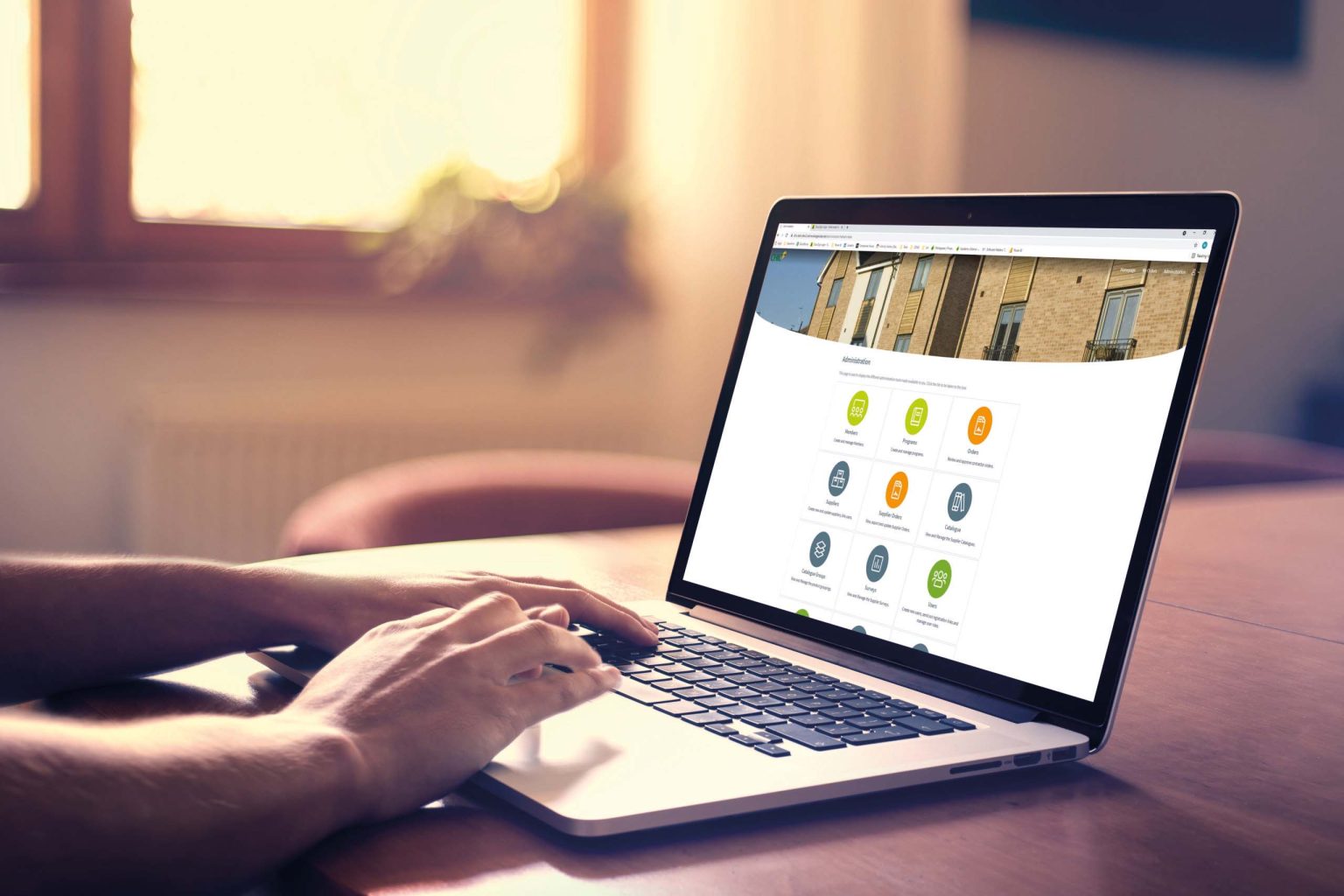In the world of social housing, delivering planned maintenance can be a complex and time consuming process. With numerous properties, varied contractors and tight budgets, housing associations need smart systems that streamline procurement and offer clear oversight. That’s exactly where the CHIC Order Management System (COMS) delivers.
Described by its creators as “the Amazon of social housing,” COMS is an intuitive platform that simplifies the entire ordering process for CHIC members, providing clarity on each step of the ordering journey and empowering housing associations and local authorities with detailed management information and control.
A Smarter Way to Manage Orders
At its core, COMS is built to handle the end to end journey of contractor orders within planned maintenance programmes. The process starts with the contractor, who can log into the system, choose a property and select the materials they need from a predefined catalogue. This catalogue is tailored to their assigned workstream, such as kitchens, bathrooms or boilers and ensures they can only view and order what is relevant to their task.
Deliveries are arranged based on pre set service level agreements with suppliers, and contractors can also raise queries or return items directly through the system. This helps reduce the back and forth that often slows down jobs and adds administrative overhead.
Suppliers, meanwhile, have minimal interference. COMS isn’t designed to replace their existing systems, but to work alongside them. They log in only to view and process approved orders. This approach eliminates the risk of acting on an unverified request, a common issue in older systems.
Deep Control for Registered Providers
While COMS offers simplicity and minimal disruption for suppliers, it provides CHIC members with powerful tools for oversight and cost control.
One standout feature is its detailed budgeting capability. Rather than applying a flat budget across an entire programme, COMS allows budgets to be set per property and even per room or workstream. For example, a member can allocate different amounts to the kitchen, bathroom and boiler installation within the same house and track how much each one costs.
This granularity also extends to reporting. Using Power BI dashboards, which are custom built for each member. Asset Management teams can track order volumes, average costs, project completion rates and how each property’s expenses compare against their budgets. If a single property has gone significantly over budget or required multiple orders, it can signal a problem with initial surveying or procurement – data that helps prevent repeat mistakes.
Additionally, members can enforce product selection through catalogue control. If they want all contractors to use a specific boiler or kitchen unit, they can make that item the only visible and selectable option in the system. They can even set regional preferences, for instance, showing one product in northern programmes and another in the south and require mandatory item choices to ensure members get the information they need.
Contractors have also responded positively to the COMS system, having successfully used it on several large social housing maintenance projects. Recently, CHIC has engaged with a number of Tier 1 contractors who have expressed interest in incorporating COMS into their delivery models. These contractors believe that highlighting the benefits of COMS in their bids adds value and could enhance their chances of securing new opportunities.
Built on Feedback, Evolving with Purpose
COMS development has been shaped by feedback from CHIC’s members who were frustrated with existing systems that lacked flexibility, reporting tools, or purchase order (PO) integration.
In response, features like PO support, mandatory item selection and conditional delivery timelines (e.g. faster delivery if ordered before a certain time of day) have been added. COMS is updated regularly, with new tools to better align with both members and contractors workflows and planning needs.
One of the most appreciated features is consolidated invoicing. Rather than receiving an invoice per order, meaning potentially hundreds of individual invoices each month, a common headache for large clients, COMS batches all orders by supplier and programme into just a few invoices each month. This not only saves time but also improves invoice processing accuracy, as reported by users like Two Rivers Housing, who saw their invoice first time pass rates increase significantly.
Free to Use, Built for Scale
Despite offering many features, COMS is entirely free for members, with organisations like Birmingham City Council, already leveraging the system’s reporting functionality to monitor performance and inform future programmes.
While adoption may be slower among members who already have partial solutions or legacy systems in place, the increasing sophistication and flexibility of COMS is making it harder to ignore. Its ability to close gaps in reporting, simplify procurement and reduce invoice friction is winning over new users.
Conclusion
COMS is a system designed with the real needs of social housing in mind, balancing ease of use with control and actionable insights. If you would like a demonstration of the system, please get in touch with CHIC’s Business Intelligence Manager Martin ([email protected])



